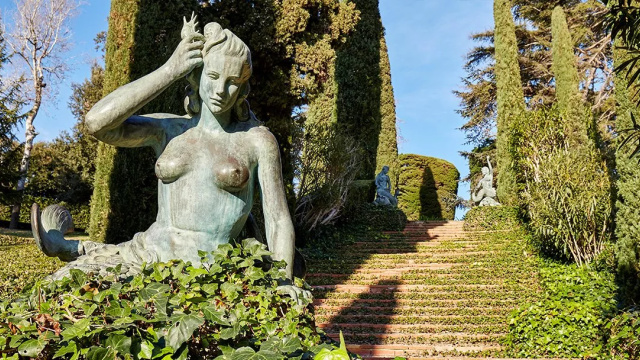MOLL: Lloret Open Museum
Don’t feel like an observer: get to know Lloret’s heritage and get involved.

Santa Clotilde Gardens
Santa Clotilde is a space to relax in and take a stroll. It’s full of nature, aromas, colours and tranquillity, not to mention a fantastic location to take in spectacular views of the Costa Brava. The gardens are also home to typically Mediterranean plants, including pines, lime trees, poplars, cypresses and more.
Its views and maze-like architecture, complete with fountains, statues and a lake, lend it a magical, romantic air and make these serene gardens an unforgettable beauty spot.
The Marquis of Roviralta (Raúl Roviralta), an admirer of the romantic Italian gardens of the Renaissance period, decided to commission the construction of these gardens for his own personal use, thus becoming a part of the noucentisme (or Catalan modernism) movement in Catalonia.
However, long before this happened, Roviralta had met Clotilde Rocamora, a young girl from Barcelona who came to Lloret de Mar in 1917 when the area was still covered in vineyards.
The Marquis decided to buy them, becoming the owner of seven vineyards in total.
To achieve his dream and create the gardens, he contacted Nicolau Rubió i Tudurí, a landscape architect, to carry out the project.
Construction of the gardens began in 1919, but, in 1927, despite her young age, Clotilde died without ever seeing them finished. This paralysed the project until the Marquis met Odile, his second wife. Two years later, work on the gardens resumed.
Construction continued until the end of the Spanish civil war, and the gardens carry Clotilde’s name in honour of the Marquis’ first wife.
The gardens remained in the possession of the Roviralta family until 1997, when the Town Council decided to purchase them, carry out renovations and turn them into an asset for the town. In 1994, they were declared a National Cultural Heritage Site by the Government of Catalonia.
















